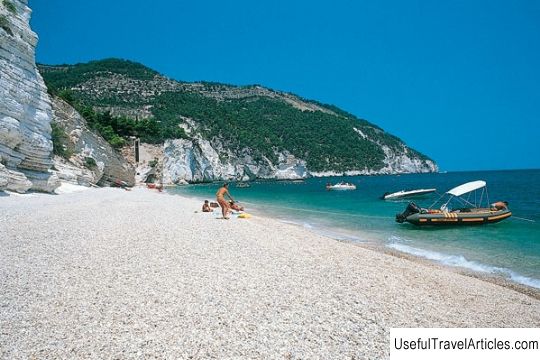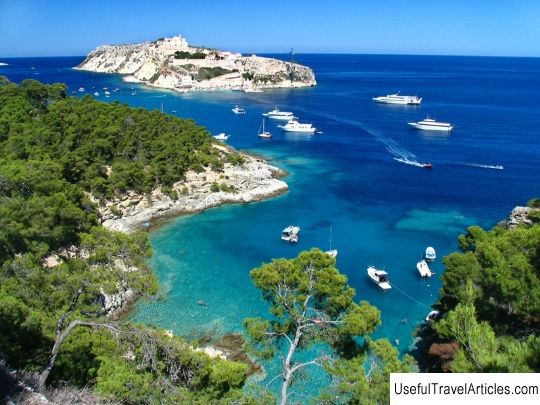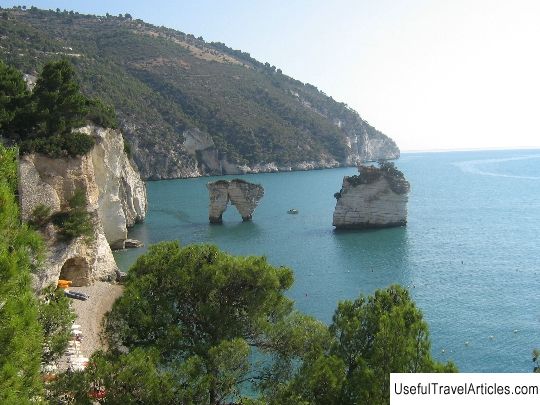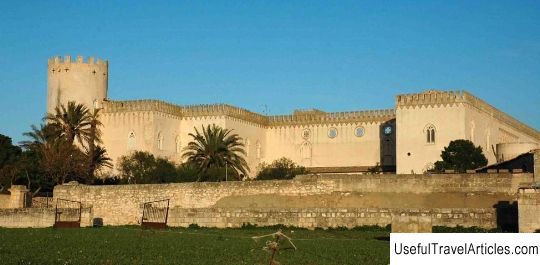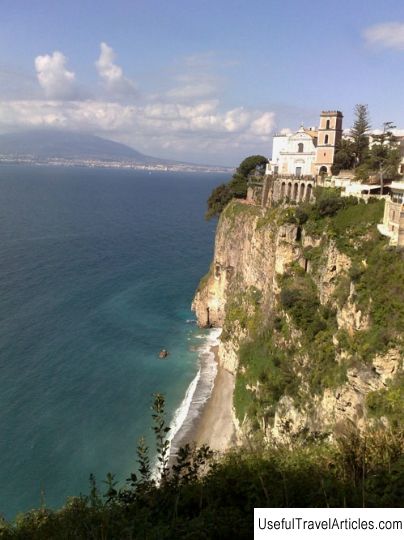Vico del Gargano description and photos - Italy: Apulia
Rating: 7,8/10 (3433 votes) 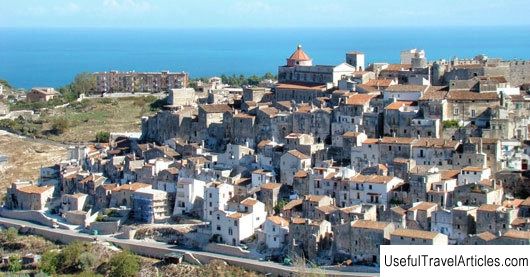
Vico del Gargano description and photos - Italy: Apulia. Detailed information about the attraction. Description, photographs and a map showing the nearest significant objects. The title in English is Vico del Gargano. Photo and descriptionVico del Gargano is a city in the province of Foggia in the Italian region of Apulia, which is often called the "City of Love". It is located in the Gargano National Park. The historic center of Vico del Gargano is an excellent example of urban architecture, perfectly preserved for many centuries. It is there that many of the city's attractions are located, for example, the Trapetto Maratea Museum, the Castle of Frederick II, Palazzo della Bella and Vicolo del Bachio, which means "Avenue of Kisses". Wandering through the narrow streets and tiny squares of Vico del Gargano is extremely pleasant, especially in the evening, when the floodlights are lit and the city turns into a shimmering cycle of medieval walls, terracotta roofs and mystical alleys. Vico del Gargano is also famous for its numerous churches and chapels - there are about thirteen in total. The oldest church dates back to the late 6th century and is named Chiesa Matrice. It is precisely its red dome that dominates the rest of the buildings in the city center. And it is in this church that the statue of St. Valentine, the patron saint of Vico del Gargano, is kept. Also worth seeing is the Church of St. Joseph with a wooden sculpture of the dead Christ. The above-mentioned Trapetto Maratea is the main city museum located in the Casale quarter. It got its name because it is located inside the trapetto - an old 14th century oil mill that belonged to several noble families of Vico del Gargano. Until now, traces of the paths used by mules to bring olives here are visible around the building. Inside Trapetto Maratea, many of the original tools and implements used to extract the olive oil for which Puglia is so famous are preserved. Just outside the historic center of Vico del Gargano is the Capuchin monastery, built in 1556 by the Marquis Colantonio Caracciolo. In the courtyard of the monastery church, you can see a huge oak 5 meters in diameter, planted in 1646 after a devastating earthquake. Legends say that at the entrance to the monastery is buried Prince Spinelli, who was hated by the locals for his unjust laws and cruelty. And a wooden crucifix considered miraculous is also kept here. Around Vico del Gargano, many archaeological finds were made at one time, suggesting that that these territories were inhabited in ancient times. Thus, a necropolis of the 6-5th centuries BC was found, bearing the name of Monte Tabor. And on Cape Monte Pucci, under the tower, built by the Spaniards in 1569 to protect against the Saracens, there are many grottoes and small caves in which people lived during the Paleolithic era. Finally, it should be said that Vico del Gargano is called the "City of 100 sources". Historically, these springs gushing out of the ground were the only source of drinking water for the local population, and very soon became a place of meeting and communication. The Canneto spring is still used by the locals, and tourists never tire of being amazed at its purity. Another source, the Old Fountain, or the Fountain of the French, is a cozy place surrounded by trees, with an octagonal fountain and a well-preserved old laundry.     We also recommend reading Organ hall description and photos - Moldova: Chisinau Topic: Vico del Gargano description and photos - Italy: Apulia. |
